When choosing your HVAC system, among the important points to consider is its evaporator coil configuration. Are there major differences between vertical and horizontal coils? If so, which should you go with? We have done the research and distilled the information to answer your questions on this topic:
The main thing to consider before choosing between a horizontal or vertical evaporator coil is your installation space. Traditionally, vertical evaporator coils are installed to promote vertical airflow. However, if your installation space is narrow, then the horizontal evaporator coil is an option to consider.
In this article, we will discuss evaporator coils in detail. This will include the feature of each configuration, the various types, and other relevant information. If you are interested to learn more, then read on!
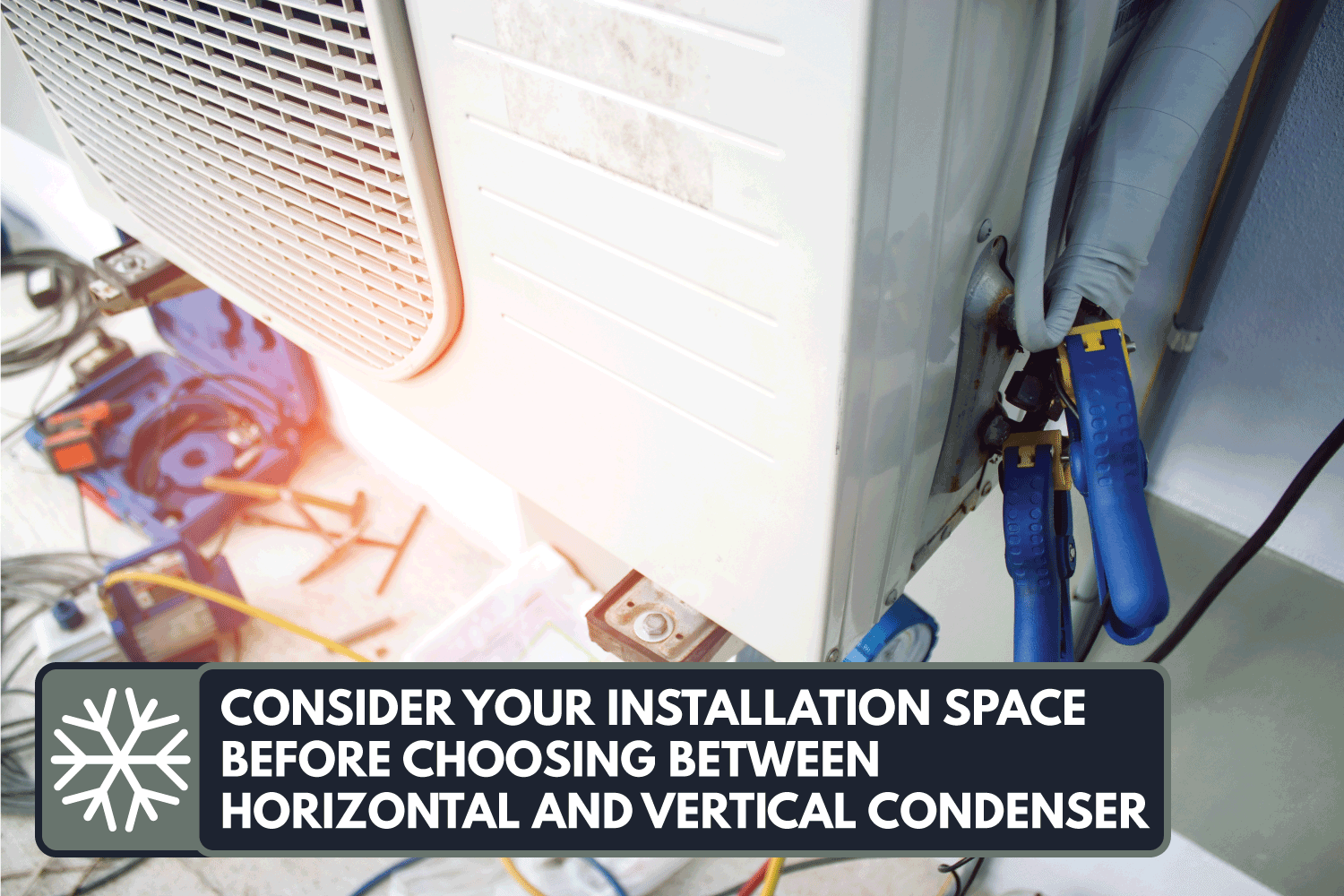
Which AC Evaporator Coil Is Better
AC evaporator coils have two main configurations, vertical and horizontal. Choosing the right configuration is crucial to how your ACs perform. To know which coil configuration works best for your needs, let us take a deeper look at each.
Vertical AC evaporator coil
Installation space is a primary factor when choosing your coil configuration. Vertical configuration equates to vertical air movement. The up-flow or down-flow of air is relative to the position of the blower fan.
In basement installations, blower fans located below the coils generate an up-flow of air. This is considered energy efficient as the hot air in the evaporator coils naturally rises. For those who have enough basement space, vertical evaporator coils are for you.
If you do not have basements, then you can install your vertical evaporator coil in the attic. Units in the attic have their blower fan on top of the evaporator coils, thus, warm air is expelled at the bottom end. This creates a down-flow air movement that is not energy-efficient.
Horizontal AC evaporator coil
Horizontal coils take less space as the blower fan and evaporator coils are aligned with one another. This can be installed in crawlspaces or narrow attics. In this kind of configuration, the air is drawn from one side and expelled on the other end. In terms of energy efficiency, this is not as ideal as up-flow.
What Are The Most Common Evaporator Types
There are several selections of evaporator coils available in the market. These selections can either be cased or uncased. Their case layout determines whether they are vertical or horizontal evaporator coils.
Cased evaporator coils
Cased evaporator coils are the most common for residential and commercial use. These types are housed by a metal casing and are widely preferred because it is durable and easy to install. Cased evaporator coils have further variations.
N coils
The coils get their name from their shape. N coils resemble the shape of the capital letter "N". They are relatively smaller than the other types but are just as efficient. This is why N coils work fine with either vertical or horizontal case configuration.
A coils
Like N coils, A coils were named as such because they look like the capital letter "A". These coils are commonly used with a vertical case layout. Because of its wide contact surface, A coils are highly efficient.
V coils
The V coils are the newest type of coil in the market and are still gaining fame. Like A coils, it is usually housed in a vertically oriented case. The advantage of this type over other evaporator coils is that is easier to install. Also, because there is no delta plate, accessing the coil does not warrant using tools.
Slab coils
This coil type comes in a simple slab shape. This is the least common of the evaporator coils. Because of its shape, it can only fit a horizontal case configuration.
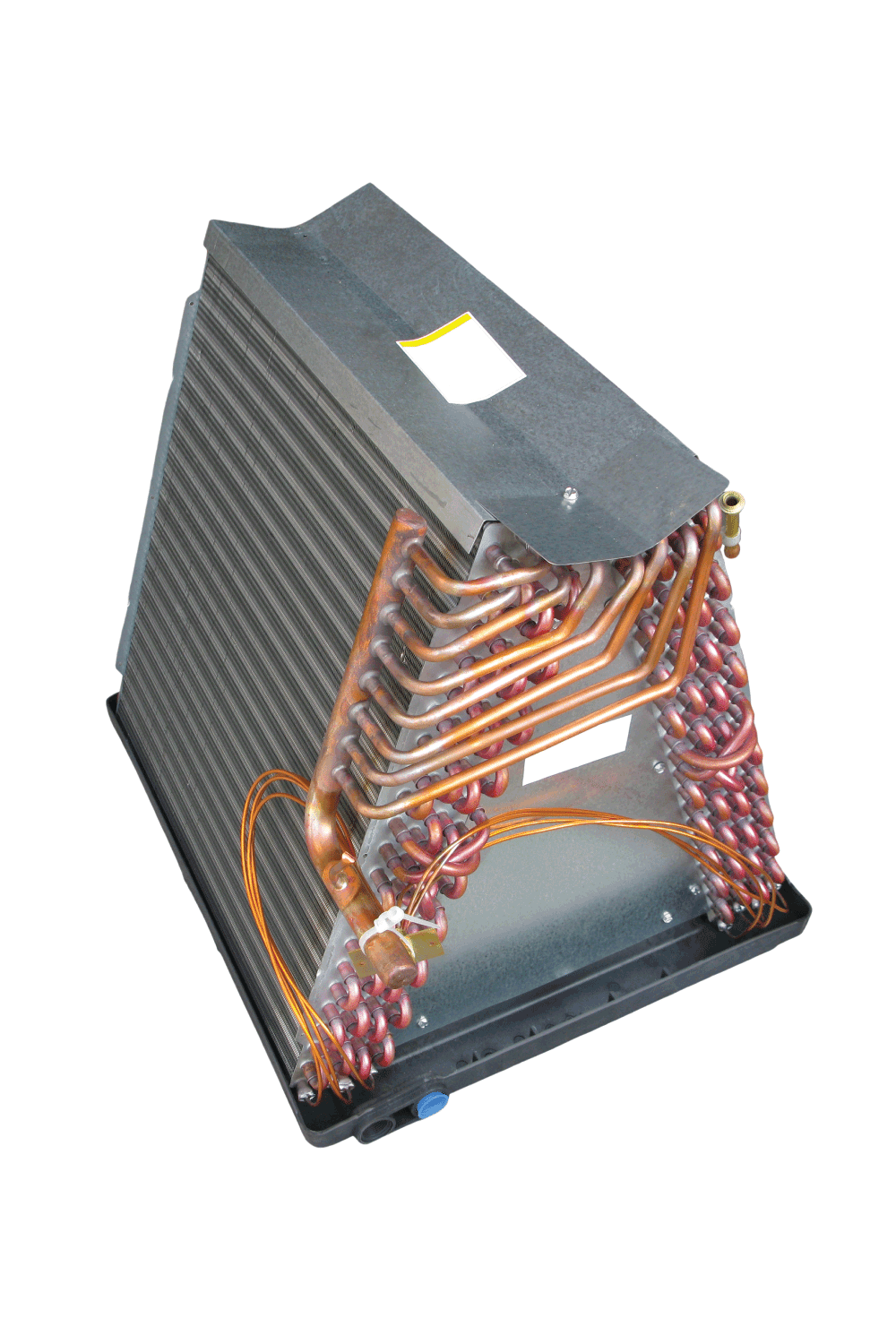
Uncased evaporator coils
Uncased evaporator coils can work with either horizontal or vertical AC units. The absence of an external case makes them less bulky, and more flexible for installation. However, since this type is usually used to fit customized AC units, you will need professional help to install it. The most common subtypes for uncased evaporator coils are N coils and A coils.
If you are interested to know more about this topic, read this article: Evaporator Coil Cased Vs Uncased – Which To Choose?
How To Care For Evaporator Coil
How you maintain your evaporator and condenser coils are a big factor in how well your AC works. To help you keep your AC in top-performing condition, here are some tips on how to care for your evaporator coils.
1. Regularly clean or change your air filters.
Dirty filters reduce airflow and affect your AC's efficiency. It can also cause your evaporator coils to soil and impair heat absorption. Cleaning or replacing your air filters every 2 months will not only help keep your coils clean but will also give you 5% - 15% energy savings.
2. Keep to a routine service schedule.
If you take care of your ACs, the unit will last you 10 to 15 years. This is true for evaporator coils as well. Ideally, you should service your air conditioner twice every year, once before winter and once before summer.
Learn more about How To Clean Evaporator Coils On Central Air Conditioner
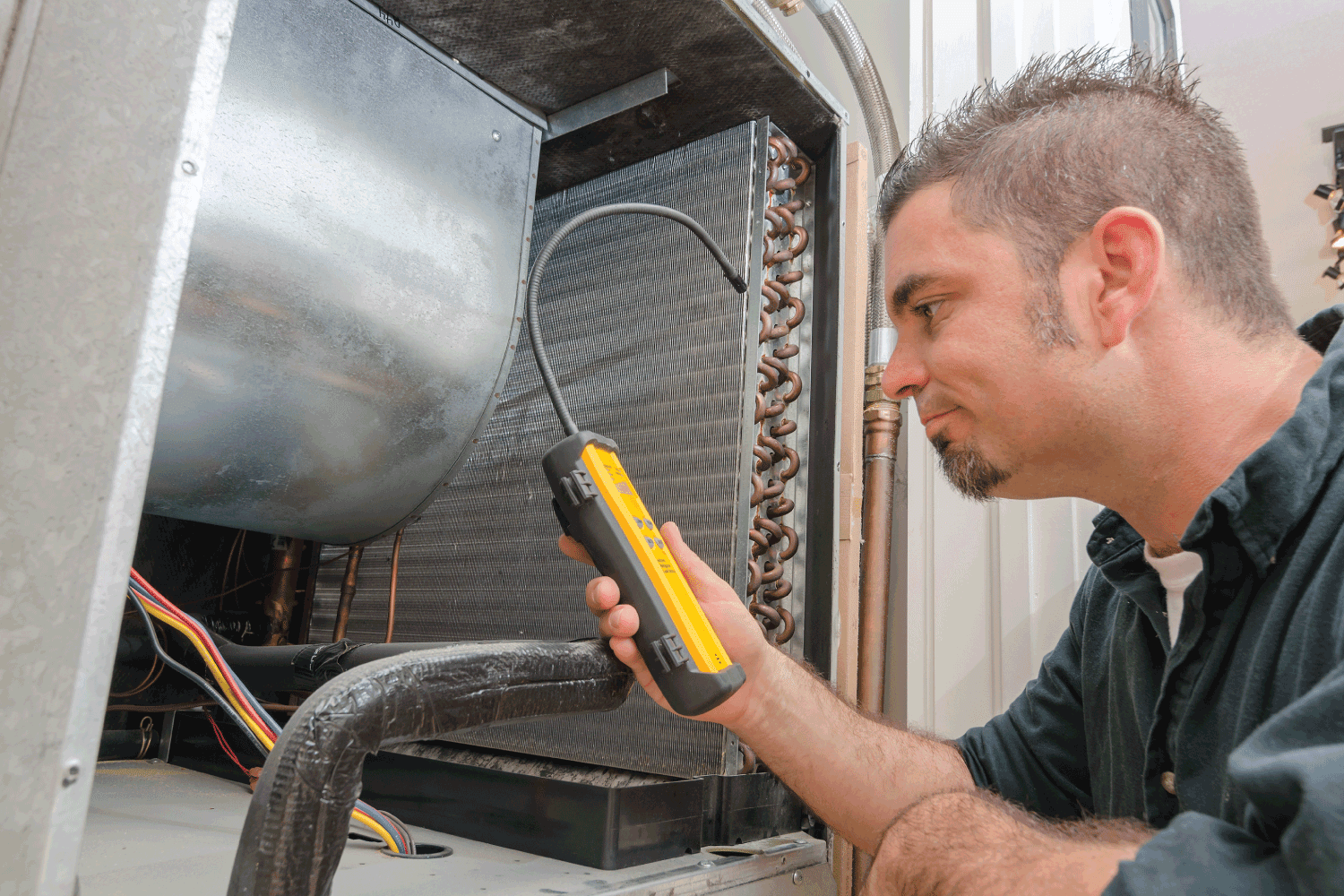
How To Know If Evaporator Coil Needs Replacing
Despite preventive measures, evaporator coils can still get damaged. To know if your evaporator coils need replacing, look for the following sign:
AC is blowing warm air
Evaporator coils are designed to take in warm air and cool it down. If your AC starts to blow hot, an impaired evaporator coil is a possible culprit. There are also other possible reasons for warm air to come from your unit. To properly assess your evaporator coil, it is best to contact your service provider.
Water is leaking from the indoor unit
Water leaking from your indoor unit can come from frosted evaporator coils. A possible reason for this is refrigerant leaks. The leaks happen when the coils have cracks on them as a result of natural wear and tear.
AC makes strange noises
As a result of the damaged evaporator coils, you may notice hissing or bubbling sounds. That is the sound of the pressurized refrigerant as it leaks from the coils. If you hear these noises from your AC, better call the professionals to handle the needed repair.
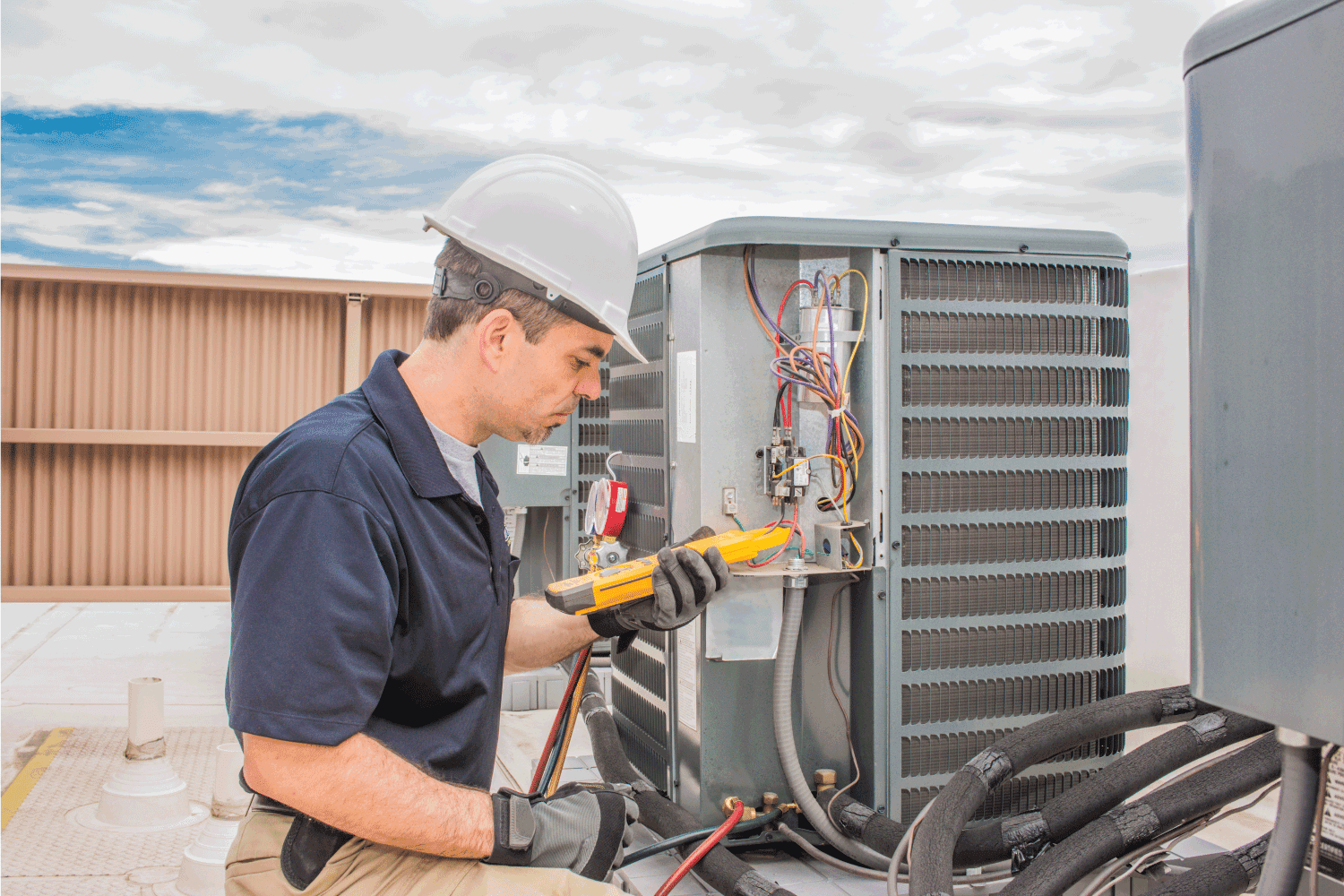
How To Replace Evaporator Coils
Replacing your evaporator coils will require you to have technical knowledge of how to handle refrigerants. Also, you need to locate the leak on the evaporator coil just to be thorough. Leak detectors can help you do this.
Go to Amazon and check out this refrigerant leak detector.
If you feel you can handle replacing your evaporator coils yourself, then here is a guide you can follow:
1. Remove the refrigerant.
Before removing the coil, or handling any electrical component, disconnect the appliance from its power source. Pump the refrigerant to low pressure with the use of a scroll compressor.
2. Close the liquid line.
Using a service wrench, unfasten the valve caps. The suction and the liquid pressure should drop to 10 PSI. Shut down the suction valve at the same time.
3. Remove the old evaporator coil.
Cut the inbound and exit tube. If there is an old line drier, remove it, and replace it with a new one. Follow the manufacturer's guidelines on this. Temporarily, plug the ends of the cut lines to prevent oil contamination.
4. Replace the new evaporator coil.
With the new coil also comes a new metering device and drain pan. Make sure the replaced coils are level, and the retaining clips are in place. Carefully weld the tubes back together with nitrogen flowing at 3 -5 SCFH. Reattach and seal the drain line properly.
5. Run the system.
Once the tubes have been welded back into place, test all your joints for pressure and bubbles. Turn the unit on, and run it for 15 - 20 minutes to assess system function.
For a more detailed run-through of how to replace your evaporator coils, watch this video:
Apart from meeting the labor requirements, you also need to match the new evaporator coil's capacity and SEER rating with the old one. Mismatched parts will compromise the performance and lifespan of your system. Replacing an old evaporator coil with one that doesn't match may void the warranty on your unit.
Because of this, it is important to know your coil model and serial number. The item's data sticker will tell you what you need to know. Here is a video to guide you on how to determine your evaporator coil model and serial number.
Read "Can I Use A Larger Evaporator Than Condenser?" to know more
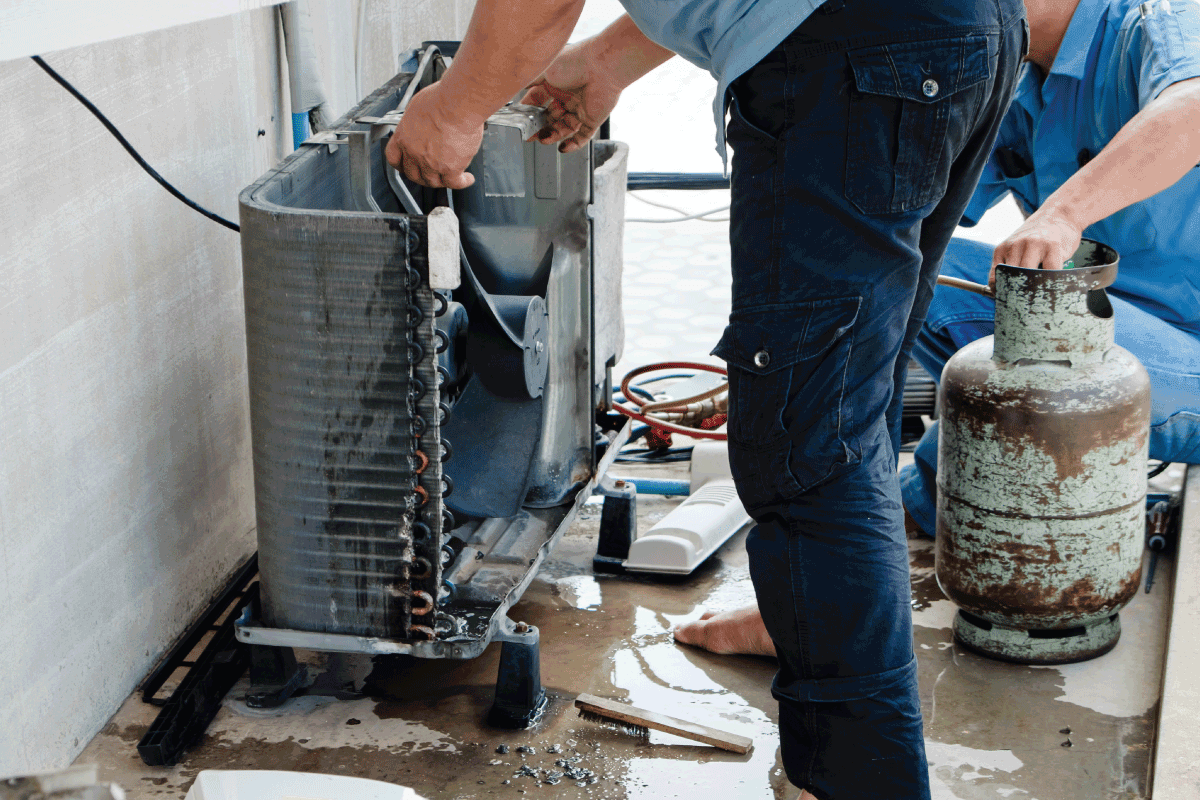
Closing
Overall, choosing the correct evaporator will depend on the space you have available. But what we know now, is that evaporator coil orientation will not affect its performance. As long as the coils are well-maintained, they will serve their purpose for a long time. Should it happen that you will need to replace your coils, it is still best to contact your service provider.
Other related articles:
Evaporator Coil Wider Than Furnace – What To Do?
How Long Does It Take To Replace An Evaporator Coil?

